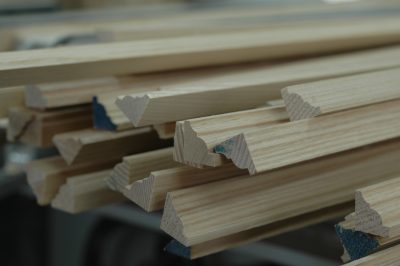UPDATED 22May2020 + videos below: If you want to boost your woodworking game, you need to know the best way of sanding trim. And the fact is, every kind of trim needs to be sanded before staining or finishing, especially if you plan to use a clear sealer such as urethane. Texture is the reason why.

The spinning machine tools that mill trim always leave behind at least small undulations on the profiles they create. These might not be noticeable when the trim is bare, but these flaws will show up after a finish goes on. This is why all trim needs to be sanded before finishing. The thing is, this is not only a pain, but it also takes a long time to do well. And if this wasn’t enough, there’s the danger of rounding over the crisp details that make trim attractive. That’s no good, but it’s where a simple sanding attachment can help.
I solve these problems with a “sanding mop” that I use on my drill press. Simple tools like these deliver smooth results on irregular surfaces, and as unlikely as it sounds, they don’t make crisp details dull, either.
Click below to watch two videos. One shows the sanding mop doing its thing on some shop-milled trim I made. The other video is a detailed tour of how I make my own trim from rough lumber using a router table with feather boards. I hope you find both these videos useful.